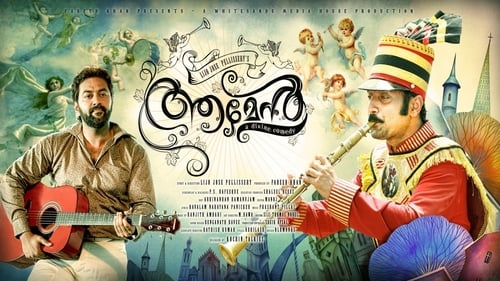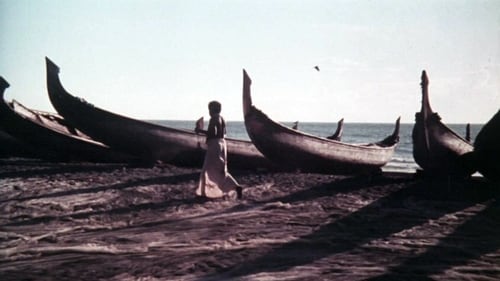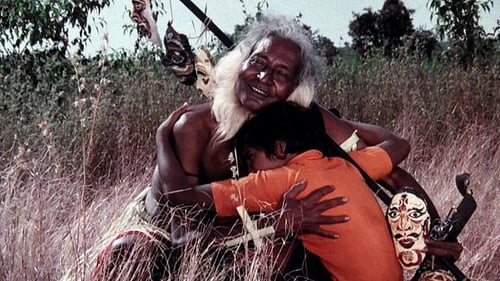Kavalam Narayana Panicker
出生 : 1928-04-28, Kavalam, Kerala, India
死亡 : 2016-06-26

Music
Ottaal (The Trap) is an adaptation of one of Anton Chekhov's timeless works, Vanka. A story of the 18th century, but one that has traveled the time and space to be retold in the present day at a small village in the South of India. Kuttappayi, a young boy, is miserable and desperate as he starts writing a letter to his grandfather from a place, dim and dark. Kuttappayi's recollections takes us to the picturesque locations of Kuttanad, where Kuttappayi and his grandpa, Valiyappachayi, are arriving with their ducks. The village is as pleasant as it can be even though what brings him there is the death of his dearest parents. With hope and freedom, he is about to start his life afresh among the village's letter-less postman, the nameless dog, the rich lad, Tinku and many more.

Director
King Agnimitra is at war with the neighbouring state Vidharbha. He has two wikfes, Dharini and Iravati. The beautiful Malavika a fugitive in war lives in cognitive as Dharini's maid in Agnimitra's Court. Agnimiytra happens to see Malavika in a dance competition which was arranged by his friend Goutama (Vidooshaka). Love grows between Agnimitra and Malavika. They find a rendezvous under an Asoka Tree. Informed by the King's commandoes, Dharini and Iravati catch the lovers together, Malavika is imprisoned. Vidooshaka devices a scheme to free Malavika and she is freed. Parivrajika who knows the secret about Malavika's latent power advises her to kick the dried Asoka tree. The tree immediately blossoms. This coincides with the victory of Agnimitra in the war with the Greeks. The play concludes with the King marrying Malavika.

Musical
Solomon, who belongs to a band, is in love with Soshanna, who hails from an upper class family. The story spells how Solomon manages to win over all the obstacles to marry Soshanna.

Lyricist
Radha Madhavan (Anoop Menon) is stuck in a Russian airport with his deceased mother's body. Despite airport officials sending away passengers to hotels, he is unable to part with the body. Soon, a Malayali-Russian lecturer learns about him and tries to console him.

Screenplay
Panicker's one-act play deals with the relation of identification between an actor and his or her role. The action takes place on the eve of the last act of the Kathakali piece Keechakavadham (The Killing of Keechaka). The events surrounding the performance uncannily echo events in the play. One character even claims to have killed the lead actor of the play because he detested the character the man portrayed. However, the three different accounts that are presented of the same plot are never resolved or reconciled with each other. Each version is accompanied by a different style of folk music: the tune and rhythm of southern Kerala’s thampuran pattu, the pulluvan pattu and the ayappan pattu. The performers were drawn from the theatre and from Kathakali. In southern India, with its plethora of politicians using their film images to acquire inordinate wealth and power, Aravindan’s TV film bears on an eminently sensitive political as well as aesthetic issue.

Screenplay
Esthappan is a fisherman, who lives in a seashore colony. His story unfolds through narrations by other fishermen about his miraculous acts. Through the contradictory statements of these people, a mystical figure of Esthappan unfolds.

Story
Esthappan is a fisherman, who lives in a seashore colony. His story unfolds through narrations by other fishermen about his miraculous acts. Through the contradictory statements of these people, a mystical figure of Esthappan unfolds.

Story
A trickster magician descends upon a village in Malabar, India, year after year, drawing children whom he transforms into animals through sorcery.

Lyricist
Across a dirt road, the circus truck comes to a village. The tent goes up. Schoolboys run to the tent. Village women come and watch an acrobat roll a hoop across a tightrope. A lion leaps from the edge of one stool - across darkness - on to another stool. A gap-toothed old woman gazes at a goat on a tight rope; her eyes are wide with curiosity. For three days the circus makes small ripples in the life of this village. Municipal permits are required. At a toddy shop, a soldier befriends the circus strongman; a pump attendant sits on a rock each day watching a village girl bathe and dry her hair. The dwarf brings back to the circus a watermelon larger than his head. In the film's three days, we, the viewers, learn the geography of the village: the banyan treewith leaves like transparent film, the shining water, the light on the sand at sunset. When the circus leaves the village, it leaves us. The narrative says: The circus comes and leaves; life goes on.








